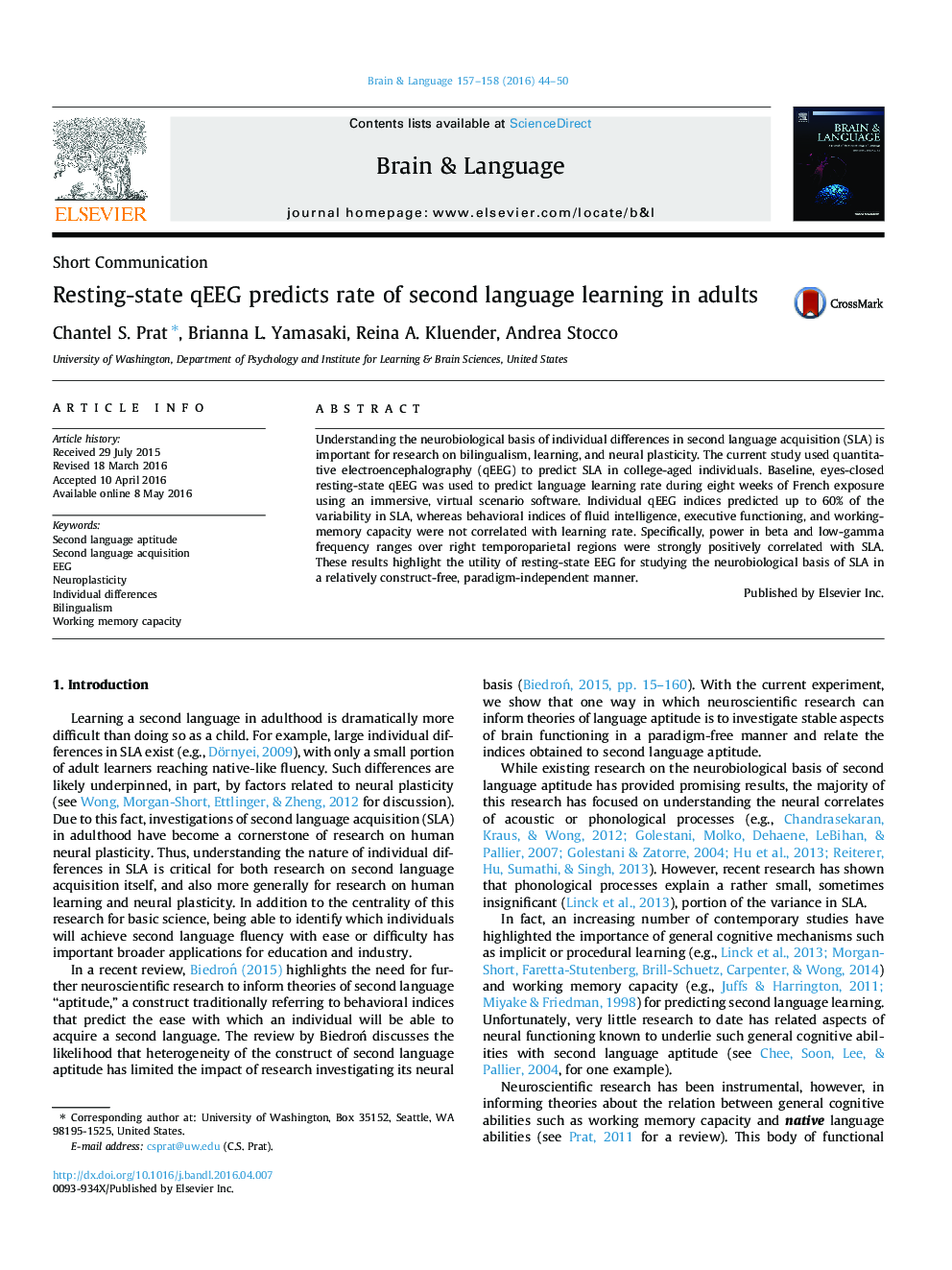| کد مقاله | کد نشریه | سال انتشار | مقاله انگلیسی | نسخه تمام متن |
|---|---|---|---|---|
| 925242 | 1474026 | 2016 | 7 صفحه PDF | دانلود رایگان |
• Resting-state EEG explained 60% of the variability in second language learning.
• Higher beta and gamma power predicted faster second language acquisition.
• Lower delta and theta power predicted with faster second language acquisition.
• Greater laterality of alpha and beta power predicted faster language learning.
• Working memory and fluid intelligence did not predict second language learning.
Understanding the neurobiological basis of individual differences in second language acquisition (SLA) is important for research on bilingualism, learning, and neural plasticity. The current study used quantitative electroencephalography (qEEG) to predict SLA in college-aged individuals. Baseline, eyes-closed resting-state qEEG was used to predict language learning rate during eight weeks of French exposure using an immersive, virtual scenario software. Individual qEEG indices predicted up to 60% of the variability in SLA, whereas behavioral indices of fluid intelligence, executive functioning, and working-memory capacity were not correlated with learning rate. Specifically, power in beta and low-gamma frequency ranges over right temporoparietal regions were strongly positively correlated with SLA. These results highlight the utility of resting-state EEG for studying the neurobiological basis of SLA in a relatively construct-free, paradigm-independent manner.
Journal: Brain and Language - Volumes 157–158, June–July 2016, Pages 44–50
